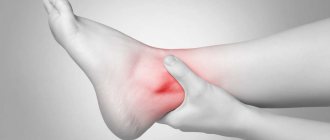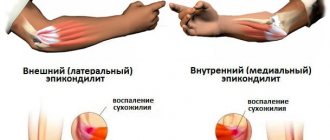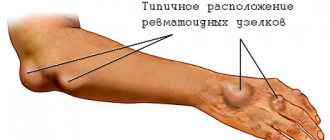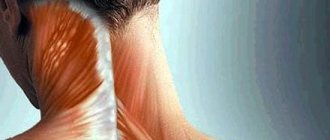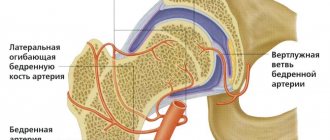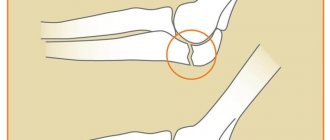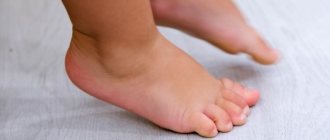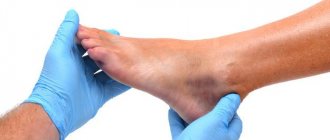Why do my foot joints crunch?
Before you rush to fight pain and crunching in the joints, you need to understand the possible causes of its occurrence.
There are people who endure pain for a long time, not wanting to see a doctor, and there are those who, at the slightest discomfort, begin to take a huge amount of medications. And they are not even interested in what actions and consequences the medications cause, the main thing is to relieve pain - that is their goal.
But figuring out the causes of pain is postponed for later by both the former and the latter.
And as a result, we have chronic diseases with vague symptoms. And a huge number of inflammatory processes in the body.
At the same time, we should not forget that, despite the actively developing methods of diagnosing certain diseases in medicine, medicine still cannot give a clear answer to what is the cause of joint pain.
In this case, one of the reasons for the occurrence of pain in the joints may be the accumulation of harmful substances, unremoved decay products, or perhaps one of the diseases of the musculoskeletal system is beginning to make itself felt, or perhaps the ligaments are simply atrophying. One of the reasons for the characteristic crunch in the joints may be gout.
Gout is a disease associated with impaired metabolism of minerals in bone tissue. If the body does not remove uric acid well, then most often salt deposits occur in the joints of the feet, causing deformation of the feet and heels, and pain when moving. People call this heel spurs. Since salt deposition is an metabolic process, you can expect troubles in the spine, fingers, and elbows. But now I’m only talking about foot damage, since both heel spurs and deformation of the phalanges of the toes are a scourge for most people who have crossed the 50-year mark.
How to deal with these ailments? Often the problem is solved surgically: if there is a spur, it must be removed. If the spur is pointed, in the form of a thorn, which becomes so inflamed that it is impossible to step on the foot, then in this case you will have to trust the surgeon. But even after the operation, I recommend doing the exercises that I will discuss below, since there is no guarantee that the spur will not appear again. This is a metabolic disorder, often hereditary, which should not be forgotten.
The foot is the main shock absorber of the human body; the entire load falls on it. If a person has flat feet, for example, then pain in the joints and back is much more pronounced than in people who do not suffer from this disease. Of course, with gout, as well as with flat feet, orthopedic insoles help. You shouldn't give them up. On the other hand, orthopedic shoes calm a person, and foot deformation goes on as usual. And soon you won’t be able to wear anything but felt boots.
Gout begins unnoticed: a crunch occurs when the foot rotates. You need to put your foot on your knee, twist your left foot with your right hand or vice versa. If you experience pain or hear a crunching sound - this is an “SOS” signal! A normal, healthy joint should not crunch painfully! Moreover, the foot is a zone of transition between arterial blood and venous blood; there are many small capillaries there. And a passive, inert foot accelerates the process of deposition of uric acid salts.
Read also: Aching leg joints
When performing physical exercises, a person experiences pain. And, naturally, he begins to be afraid of this. Meanwhile, the foot should rotate in all directions that the joint allows, and painlessly. If you experience pain, do not under any circumstances refuse to do the exercises! Do them in the morning after sleep and in the evening after work.
What kind of exercises are these? Yes, the simplest ones are rotation of the foot in any direction, flexion and extension. You can't imagine anything else here.
Crunching in the ankle joint: why the ankle crunches and clicks
A phenomenon such as a crunch in the ankle joint is often observed, usually heard during active physical activity, and sometimes at rest.
Sometimes the crunch is accompanied by pain and discomfort in the joint. Often the ankle joint cracks or clicks after an injury, bruise or bad fall.
But if the crunch persists for a long time, occurs more often even at rest, and the pain intensifies, you should consult a doctor - inflammation may be developing, requiring serious treatment.
Crunching in joints
Arthritis
Gout
Syphilis
11932 May 27
IMPORTANT!
The information in this section cannot be used for self-diagnosis and self-treatment.
In case of pain or other exacerbation of the disease, diagnostic tests should be prescribed only by the attending physician. To make a diagnosis and properly prescribe treatment, you should contact your doctor. Crunching in the joints: causes, diseases in which it develops, methods of diagnosis and treatment.
Definition
Crunching in the joints is a specific sound that accompanies active or passive movements in the joints. Crunching can be observed in any large or small joint and does not always indicate a disease, so it must be considered in conjunction with other symptoms.
There are three functional groups of joints in the human body:
- motionless - synarthrosis, ensuring a completely motionless articulation of bones (this is how the bones of the skull and pelvis are connected);
- semi-mobile - amphiarthrosis, characterized by limited movement (connecting the vertebrae and pubic bones);
- mobile - diarthrosis (the most numerous joints).
Joints consist of articular surfaces covered with cartilage tissue, an articular cavity, a capsule, a synovial membrane and synovial fluid.
The fluid fills the entire space inside the joint, serves to nourish and restore cartilage, and is also necessary to ensure that the articular surfaces slide relative to each other and do not injure the cartilage.
Inside the shell of some joints there are dense bands of connective tissue - ligaments; they additionally strengthen the joint and passively provide functional movements.
Types of crunching in joints
Crunching in joints can be divided into physiological, which does not imply joint disease, and pathological, which occurs in an unhealthy joint. A pathological crunch is accompanied by pain, swelling, redness of the skin over the joint, stiffness of movement, etc.
Possible causes of crunching in joints
The causes of crunching in the joints include:
- the presence of carbon dioxide bubbles in the joint cavity during sudden movement;
- inflammation, stretching or weakness of the ligamentous apparatus of the joint, due to which the ligaments no longer firmly fix the surfaces of the joint;
- degenerative-dystrophic changes in the joint;
- inflammatory diseases of the joints;
- diseases occurring with metabolic disorders;
- joint injuries.
Diseases that lead to crunching in joints
In diseases of the ligamentous apparatus, crunching occurs due to friction of inflamed joint structures or excessive contact of articular surfaces with insufficient function of the ligamentous apparatus.
Bursitis
– inflammation of the joint capsule with accumulation of a large amount of fluid in the joint cavity. The fluid can be serous (watery), purulent, containing a lot of fibrin protein. The course of bursitis can be acute or chronic. There are specific bursitis (with syphilis, tuberculosis, gonorrhea) and nonspecific, the causative agent of which is staphylococcus, E. coli and other microorganisms.
Bursitis manifests itself as swelling and redness around the affected joint, pain, moderate limitation of movement and general malaise.
Tendinitis
is an inflammation of the tendon that occurs with frequent injuries to the tendon (for example, during monotonous work) or is of an infectious nature. The course of the disease is acute or chronic. In chronic cases, calcium salts may be deposited in the tendon.
It manifests itself as pain and redness along the affected tendon, and the function of the corresponding muscle may suffer.
Joint hypermobility
is a hereditary disease of connective tissue, manifested by excessive extensibility of ligaments and tendons, joints acquire excessive flexibility, and range of motion increases.
Joint hypermobility is not a harmless condition, as it can lead to the destruction of articular cartilage, chronic dislocations and subluxations, and inflammation in the joint.
Arthrosis
is a chronic progressive disease, which is based on the destruction of the cartilage of the articular surfaces, gradually spreading to all structures of the joint. In the later stages of the disease, the cartilage becomes corroded and rough, and the exposed bone areas become deformed, which leads to a narrowing of the joint cavity.
Risk factors are old age, excess weight and other excessive load on any joint, hormonal disorders, deficiency of vitamins and minerals.
Most often, a crunch is the very first symptom of incipient arthrosis of the joint, followed by pain during movement, starting pain at the very beginning of movement, pain at the end of the day, with excessive load on the joint.
In the later stages, persistent joint curvatures form, which significantly worsens the quality of life.
Arthritis
is a group of diseases united by one characteristic: inflammation of the synovial membrane, which can be caused by infectious, autoimmune, metabolic and other processes. In the chronic course of the disease, the tissues of the synovial membrane grow, leading to deformation of the cartilage, and then other structures. With severe damage, a crunching sound may appear in the joint.
Symptoms of arthritis may include pain and stiffness that appears when the joint is at rest for a long time (for example, after sleep), these phenomena decrease during the day, and the person “paces.”
Microcrystalline arthropathy
(gout and pseudogout)
occurs with metabolic disorders This is a separate type of arthritis, which is characterized by the deposition of salt crystals in the joints: in gout - uric acid salts (urates), in pseudogout - calcium salts.
These diseases are characterized by swelling and pain in the joints with severe limitation of mobility, and a rise in body temperature.
Which doctors should you contact if you have cracking joints
? First of all, you need to contact a general practitioner. If necessary, the therapist will give a referral to a rheumatologist. If a crunch in a joint is associated with an injury, you should consult a traumatologist.
Diagnostics and examinations for cracking joints
At the very beginning of the examination, the doctor conducts a survey and examination of the patient, identifies the degree of joint pain and assesses the range of movements, clarifies the diet, physical activity, and determines the ratio of height and weight.
In some cases, the following laboratory and instrumental examinations may be required:
- general blood test to detect inflammatory changes;
Why does my ankle crunch?
Physiological causes of crunching are defects in the connective tissue of the joint. They can form for a variety of reasons.
- Age-related changes in the ankle joint. The tissues of the joint have simply worn out and can no longer fully cope with their functions.
- Injuries - with dislocations and sprains, the ligaments weaken, the ankle joint becomes pathologically mobile, and its structure is disrupted.
- Great physical activity - lifting heavy weights or active sports can provoke a crunch in the ankle joint.
- Sedentary lifestyle. In this case, the joint tissues are weakened and atrophied, so even when performing simple movements without load, the joint crunches.
Often the joint crunches and clicks with the development of articular pathologies of various natures.
How to deal with natural crunching
{banner_banstat4}
If no pathologies are identified in a child with a crunching ankle, then no treatment is required. The condition of the joint will normalize over time, and sound phenomena will no longer accompany all movements of a small child or teenager. Pediatricians recommend enriching the diet with fresh vegetables and fruits, which contain a high concentration of substances necessary for the formation of the skeleton. To improve the functioning of all joints, doctors prescribe balanced complexes of vitamins and microelements: Supradin, Alphabet, Complivit, Vitrum, Selmevit, Multitabs. For babies from 12 months, Pikovit is available in the form of a sweet syrup.
It’s a completely different matter if the ankle joint in adults cracks for natural reasons. This causes not so much physical as psychological discomfort, especially when in public places. One of the effective ways to eliminate it is the use of systemic or local drugs, dietary supplements with chondroprotectors. How to be treated without using medications:
- massage. To eliminate crepitus, various massage techniques are used, since they all improve the condition and functioning of the ankle. The greatest therapeutic effectiveness of massage is typical for classic, acupressure, cupping, and Swedish. During and after treatment procedures, blood circulation in the joint cavity accelerates, preventing the accumulation of carbon dioxide;
Ankle massage.
- correction of diet. The more a person weighs, the more often crackling sounds are heard when walking. But even in people with low weight, movements are often accompanied by crunching. Especially for girls and women who follow a diet and exclude foods with carbohydrates and fats from the daily menu. The diet should be balanced, containing all the necessary nutrients;
- drinking regime. When the ankle is “exploited,” harmful salts, tissue breakdown products, and toxins accumulate in its cavity. Slagging of the joint can lead to crepitus due to impaired trophism. Therefore, orthopedists recommend drinking at least 2-2.5 liters of fluid daily. Drinks with a mild diuretic effect help cleanse the joint cavity. These are berry fruit drinks, fruit compotes, vegetable juices, non-carbonated lightly salted mineral waters.
Another good way to get rid of crunching is an active lifestyle. For people over 50 years old, physical therapy doctors recommend yoga, swimming, long walks in the fresh air, physical therapy or gymnastics. You should avoid only those sports that can lead to serious injuries - skiing, hockey, football. There are no such restrictions for young people. Any kind of sport except weight lifting is suitable for them.
What diseases cause crunching in the ankle joint?
Deforming osteoarthritis of the ankle joint is the most common disease in which atypical sounds are often heard in the ankle joint, both during movement and at rest.
Arthritis, arthrosis, bursitis, tendonitis - all these diseases can also be suspected, especially if unpleasant sounds are accompanied by pain and swelling, and impaired mobility of the limb.
Any joint pathology in the absence of timely treatment leads to numerous complications, the most dangerous of which is blockade of the joint, its complete stiffness and, as a consequence, the loss of the person’s ability to move independently.
Therefore, with such an alarming symptom as clicking and crunching in the ankle, you need to find time to visit a doctor.
Pathological causes
A crunch in the ankle can be a symptom of almost any inflammatory or dystrophic-degenerative pathology. If it occurs against the background of pain, morning stiffness and swelling of the joint, then the cause of crepitus is the destruction of bone, cartilage or soft tissue. It is not advisable to delay a visit to the doctor, since all diseases of the musculoskeletal system can be treated conservatively only at the initial stage. What else indicates a pathology developing in the ankle:
- clicks are heard with every flexion and extension of the joint, and become a common occurrence when walking;
- There is no full flexion or extension of the ankle, and a subjective feeling of a certain obstacle arises.
Articular pathology is indicated by a hereditary predisposition to its development. If older relatives suffer from ankle arthritis or osteoarthritis, then the likelihood of it developing in other family members over time is quite high. The risk group also includes people with excess weight, endocrine and metabolic diseases (thyrotoxicosis, hypoparathyroidism, diabetes mellitus). Very often, the development of arthrosis is provoked by previous ankle injuries: fractures, dislocations, ruptures of ligaments, muscles, tendons. What diseases is a symptom of joint crunch:
- gouty, rheumatoid, psoriatic, infectious, reactive arthritis, accompanied by acute or chronic inflammatory process;
- tendinitis, tendovaginitis - inflammation of the tendon and (or) its sheath at the site of attachment to the bone;
- deforming arthrosis, provoked by the destruction of hyaline cartilage, accompanied by the formation of bone growths - osteophytes;
The arrow indicates an osteophyte. - synovitis - inflammation of the synovial membrane, spreading to nearby connective tissue structures;
- chondrocalcinosis, which is characterized by the gradual accumulation of calcium salt crystals in the articular cavity;
- bursitis - inflammation of the synovial bursa, which is accompanied by the accumulation of pathological exudate in its cavity.
Acute form of ankle bursitis.
You should be wary if pain and crunching in the ankle joint when walking appear after a respiratory, intestinal or urogenital infection. Pathogenic bacteria or viruses could penetrate from the primary lesions into the ankle cavity and provoke inflammation. In this case, antibiotic therapy is required to destroy infectious agents.
Treatment methods
Crunching in itself is not a pathology - it is only its manifestation. Therefore, treatment cannot begin until an examination has been carried out and a diagnosis has been made. For this purpose, MRI or radiography is prescribed. Having received an accurate idea of the condition of the joints, the doctor will determine further treatment tactics.
Read also: Foot joint pain
Joint diseases can be treated both conservatively and surgically.
- Conservative treatment methods. First of all, pain is eliminated with the help of internal medications. Various ointments with a warming, anti-inflammatory effect are used externally - for example, indomethacin. Chondroprotectors are definitely needed - medications that protect cartilage from destruction and accelerate the restoration of its tissues and functions. Preparations containing hyaluronic acid replenish the low amount of synovial fluid - it is located in the joint cavity and nourishes the cartilage. You should prepare for long-term treatment; such medications do not work immediately.
- Surgical treatment is required if the patient consults a doctor too late and the disease is already in a very severe stage. Or if conservative methods are ineffective and the pathology progresses. An operation to level its surface, which becomes rough and dry due to insufficient nutrition and pathological changes, will help restore the function of the joint. In some cases, on the contrary, you need to immobilize the joint forever - this operation is called arthrodesis. But more often arthroplasty and endoprosthetics are performed - replacing worn-out articular elements with new, artificial ones.
The main ways to eliminate pathological crunching
{banner_banstat3}
When an inflammatory or degenerative pathology is diagnosed, treatment begins immediately. If the crunch is accompanied by mild pain or no discomfort occurs at all, then the prognosis for a full recovery is favorable. The only exceptions are autoimmune diseases (gout, psoriatic and rheumatoid arthritis), which cannot yet be fully restored. Their therapy uses basic biological drugs, agents for dissolving and removing uric acid crystals from the body. The functional activity of the ankle is increased with medications for local application:
- ointments with non-steroidal anti-inflammatory components (nimesulide, diclofenac, ketoprofen, ibuprofen, indomethacin). Drugs with powerful anti-inflammatory, anti-exudative, analgesic effects stimulate the production of synovial fluid, which serves as a kind of shock absorber for bone surfaces;
- ointments with a warming effect: Finalgon, Capsicam, Viprosal, Apizartron, Nayatox. Used only after relief of inflammation to improve blood circulation in the ankle. The active ingredients of external products eliminate the deficiency of nutrients and biologically active substances, stimulate the regeneration of damaged ligaments.
Therapeutic regimens for any pathology of the musculoskeletal system necessarily include chondroprotectors with chondroitin, glucosamine, hyaluronic acid, and collagen. These are Teraflex, Artra, Dona, Structum, Chondroxide. It is useful to take such drugs to eliminate crunching that occurs for both pathological and natural reasons. Their ingredients accelerate the restoration of damaged tissues and prevent the development or progression of existing diseases.
Preventive actions
In order to prevent the development of joint diseases, it will require much less financial and time expenditure than later on their treatment. If a person is involved in professional sports and cannot reduce the load, doctors recommend regularly taking nutritional supplements that help strengthen the ligaments and maintain their elasticity.
An excellent prevention is therapeutic joint exercises. It is recommended to perform the exercises every day, in the morning - this tones the muscles, improves blood circulation and develops joints that are often stiff after a night's rest.
A specialist should select a set of exercises taking into account the patient’s physical capabilities; they can also be performed at home.
Why do my joints crack when walking?
Crunching in the joints when walking or during physical activity is known to many people. In medicine, this problem is called “crepitus.” Why does this phenomenon occur? How can you get rid of unpleasant cracking or grinding sounds in your joints? There are many opinions. But in order to choose the right treatment method, it is enough not just to diagnose crepitus, but to understand exactly where the symptom came from.
If you don’t know what to do if your joints are cracking all over your body or just when walking, this article is especially for you. In it we will analyze the main causes of crunching in the joints when walking, and also understand whether such a phenomenon should really be considered a problem.
What clicks when you lift your leg?
In many patients, the knee clicks when raising the leg, but it is possible that the sound occurs in the hip joint. And here, at the initial stage of differential diagnosis, it is important to understand what causes the unpleasant sound.
If your knee clicks, you should rule out diseases such as:
- deforming osteoarthritis (gonarthrosis) of the knee joint;
- scarring of the anterior cruciate ligament;
- lipid damage to the lateral joint capsules (bursae);
- instability of the patella.
Most of these pathologies are quite easily diagnosed during the initial examination by an experienced orthopedist. There are special diagnostic and functional tests that allow you to quickly and painlessly determine the condition of tendon, ligament, muscle, bone and cartilage tissue in a particular joint.
If a clicking sound appears in the hip joint when lifting your leg, you should pay attention not only to this articulation of bones. Such a symptom may indicate the development of ankylosing sacroiliitis. This disease is characterized by the growth of scar fibrous tissue in the cavity of the sacroiliac joint. This articulation of bones is responsible for the flexibility and mobility of the lower back, allowing you to freely raise and lower your legs. The first clinical sign may be a dull pain in the sacrum and clicking sounds when raising the leg. Please draw your doctor's attention to this when prescribing examinations for you.
Causes of crepitus
- intense physical activity;
- widening or enlargement of the joint;
- leg injury;
- damage to the joint capsule;
- degeneration of the kneecap;
- osteopathic diseases (arthritis, knee dysfunction and others).
Agree, this series sounds very threatening. But why do many people experience crunching in their joints when walking, but do not go to see a doctor at the first complaint? It's not a matter of absent-mindedness or irresponsibility. Crepitus is indeed not always a consequence of health problems. Let's try to analyze each reason in more detail.
Read also: Pain in the leg joint near the foot
Sometimes patients complain of pain when walking for a long time, swelling of the knee, and unusual numbness when straightening the leg. If the disease has just appeared, then the sound will not bother you. But over time, the sound will cease to be soft and smooth.
We have already talked about physical activity. You should only worry if the crepitus is causing discomfort and pain. Contact your doctor as soon as possible so that he can prescribe the correct treatment. And if you don’t experience anything unpleasant when you crunch, and the phenomenon itself does not manifest itself systematically, then you have no reason to worry.
For most doctors, crepitus due to the reasons we have described is also not considered a deviation from the norm. Sometimes a cracking sound in the knee can be heard during joint replacement. This problem may simply haunt you for 2 weeks after surgery. The reason is that current joints are made of plastic and metal. That’s why even walking at first is accompanied by such a sound.
Most likely you are starting to doubt... But where are the serious reasons? When to go to the doctor? How can this phenomenon be dangerous?
There is such a thing as mechanical crepitus (friction of joints). You experience pain, but the sound does not haunt you, but rarely reminds you of itself. If crepitus is the result of a certain disease, then you will feel a characteristic pain every time you extend your leg or squat.
Can you feel crepitus? Our life is a constant turmoil, so some people, unfortunately, are negligent about their problems until the symptoms begin to interfere with their life.
Of course, you can diagnose crepitus yourself without certain knowledge and skills. To do this, place your hand under your knee and move your leg (bend and swing in different directions). You may hear strange sounds. At this point, you should consult a doctor, because it is much easier to deal with the problem at an early stage than to get rid of an advanced situation.
Natural causes
If a crunch in the ankle occurs infrequently and is not accompanied by any discomfort, then in 90% of cases no pathology will be detected during examination. The appearance of sounds, or crepitus, is explained by the accumulation of carbon dioxide bubbles in the articular cavity. When movement begins, the synovial bursa stretches and the pressure in it increases. At this moment, one large bubble is formed, which collapses with a sharp sound. Typically, a cracking sound is heard when the joint is extended, not flexed. Crepitation is typical for people leading a sedentary lifestyle. While they spend time at the computer or watching TV series, many bubbles with carbon dioxide accumulate in the synovial fluid. Therefore, when you start moving or stretching, almost all large joints crack. Crepitus also occurs in people whose diet is dominated by protein foods (meat, milk, beans).
A decrease in the joint space in the left joint is a sign of incipient arthrosis.
The ankle joint crunches after being in an uncomfortable body position for a long time. When flexed or extended, its constituent elements are difficult to move relative to each other. In this case, cracking is accompanied by pain due to the unnatural distribution of loads on the muscles and ligamentous-tendon apparatus. This cause of crepitus is not considered pathological if the discomfort disappears within a few minutes.
10% of the world's inhabitants have hypermobile joints. They have overly elastic ligaments and tendons due to the biosynthesis of special hyperextensible collagen, so some joints can bend in an anatomically unnatural position. When the connective tissue structures of the ankle are stretched, a specific cracking sound is often heard, especially after a long stay in a static position. Hypermobility is a relatively natural cause of crepitus. People with overly elastic ligaments often experience subluxations and dislocations of the ankle, and after 50 years there is a high likelihood of developing osteoarthritis.
The consequences of ankle hypermobility are dislocations, subluxations, joint injuries.
